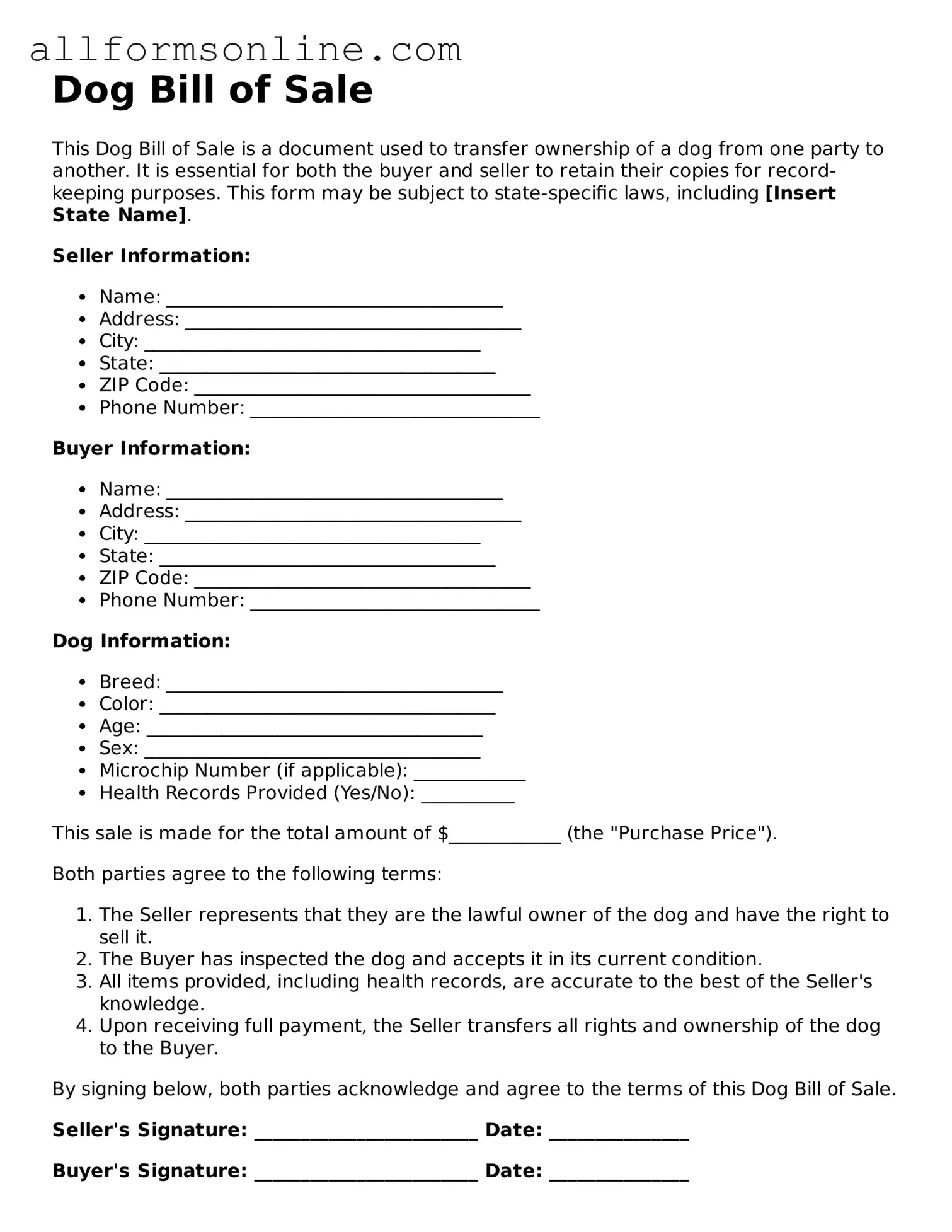What is a Dog Bill of Sale form?
A Dog Bill of Sale form is a legal document that records the transfer of ownership of a dog from one party to another. This form serves as proof of the transaction and includes important details such as the dog's breed, age, color, and any identifying features. It also outlines the responsibilities of both the seller and the buyer, ensuring clarity in the transfer process.
Why is a Dog Bill of Sale important?
This document is crucial for several reasons. First, it provides legal protection for both the buyer and the seller, establishing a clear record of ownership. It can also be useful for future veterinary care, registration, and insurance purposes. Additionally, having a written agreement can help prevent disputes regarding the dog's health or behavior after the sale.
What information should be included in a Dog Bill of Sale?
A comprehensive Dog Bill of Sale should include the following information: the names and contact details of both the seller and the buyer, a detailed description of the dog (including breed, age, color, and any unique identifiers), the sale price, and the date of the transaction. It's also beneficial to include any warranties or guarantees related to the dog's health and behavior.
Is a Dog Bill of Sale required by law?
While not always legally required, having a Dog Bill of Sale is highly recommended. Some states may have specific regulations regarding pet sales, so it’s wise to check local laws. Even if not mandated, this document can provide essential protection and clarity for both parties involved in the transaction.
Can a Dog Bill of Sale be used for any breed of dog?
Yes, a Dog Bill of Sale can be used for any breed of dog. Whether the dog is a purebred or a mixed breed, the form remains applicable. The key is to accurately describe the dog in the document to avoid any misunderstandings regarding the animal's identity and characteristics.
What should I do if I lose my Dog Bill of Sale?
If you lose your Dog Bill of Sale, it’s advisable to contact the seller to request a copy if possible. If that’s not an option, consider creating a new bill of sale that includes all relevant details about the transaction. Both parties should sign this new document to reaffirm the ownership transfer. Keeping a digital copy in addition to a physical one can help prevent future loss.
